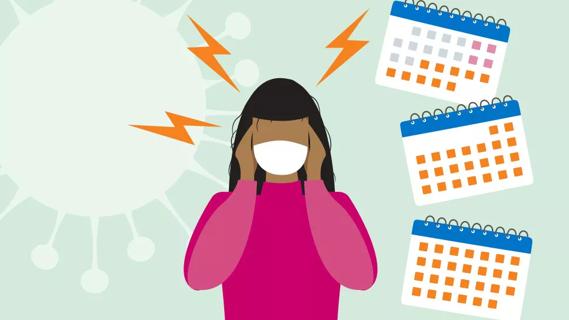In the world of COVID-19, distance learning has become the norm

With the COVID-19 pandemic pushing many schools to opt for online learning this fall, many parents are left wondering — how is this all going to work?
Advertisement
Cleveland Clinic is a non-profit academic medical center. Advertising on our site helps support our mission. We do not endorse non-Cleveland Clinic products or services. Policy
When you already have the responsibilities of holding down a job and running a household on your plate — not to mention living through a global public health crisis — an added task as big as facilitating your child’s education online can feel overwhelming.
Plus, not going back to school in-person will be a big change for your child, too.
Let’s start by taking a collective deep breath. This is not an ideal situation, and it’s important to give yourself grace and forgiveness for not being able to make everything work perfectly, says pediatric psychologist Emily Mudd, PhD.
However, there are some steps you and your child can take to set yourselves up for success and manage stress in the world of virtual learning.
One of the most important things you can do to help your child get into learning mode at home is to create a designated space where they can do their school work. “This will help them differentiate when it’s home or play time, and when it’s learning time,” Dr. Mudd says.
Don’t have space for a desk setup? Here’s where you can get creative. If your child is comfortable pulling up a chair to an end table or nightstand, then, voila, there’s a workspace. It could also be on the floor or in a beanbag chair, if they’re comfortable there. Let your child personalize their space, and keep the supplies they need close by.
Advertisement
If possible, Dr. Mudd recommends having a second space where schoolwork happens. It can be tough for kids to sit in one spot all day, so it’s nice to have a backup location for a change of scenery.
“Children thrive on structure and routine,” Dr. Mudd says. “The predictability helps them feel safe and understand what is coming next.”
Create a schedule with blocks of time for school work, physical activity and meals. But you don’t need to plan out their days hour by hour, she says. Maybe there are three school-related tasks that need to be done by lunch time. Let your child choose which one they want to do first.
“Children are motivated by choices and feeling like they have a say in how the day goes,” Dr. Mudd explains. “So when you can, allow your children to have input into the schedule.”
If your child isn’t the best at staying focused on school work instead of, say, YouTube, there are a few things you can try.
For younger children, Dr. Mudd suggests setting up some kind of reward system. “Most children are not intrinsically motivated to complete school work. It may be boring or difficult to them, so having external motivation is going to be important,” she says.
It could be that they get a sticker or a check mark for every activity they complete during the day. When they reach a certain amount of activities completed, they get to choose a reward — like deciding what’s for dinner, picking the family movie or spending extra time with Mom or Dad.
Kids might also benefit from using visual timers, like an hourglass or a countdown on their phone. This way, they can see how much time they have left to focus before they can move on to another task.
Lastly, Dr. Mudd recommends switching up the delivery of the lesson plans based on your child’s style of learning. If your child learns best by doing, for example, move math class into the kitchen and work on measuring ingredients while you’re cooking.
“Being able to tailor a lesson to your child’s learning style is one of the unique benefits of doing school at home,” she says.
If you’re pulling double-duty trying to work from home while also making sure your kids are getting an education, the goal might just be to get through the day.
We get it. Here’s how Dr. Mudd recommends balancing your time and stress:
Advertisement
If you find yourself frequently butting heads with your child about school work, schedules or boundaries, allow yourself to take a breather. “This is a marathon, not a sprint,” Dr. Mudd says. “Take a break to re-center yourself and let your child take some space for themselves, too.”
Finally, if you’re consistently dealing with technology woes, or if your child is struggling with the curriculum, don’t hesitate to reach out to your school. Unlike in the spring when schools abruptly closed to curb the spread of COVID-19, they’ve now had time to prepare for the reality of a virtual semester and may have ideas or resources that can help.
Advertisement
Learn more about our editorial process.
Advertisement

The short answer: It’s complicated, but the basic care precautions still prevail, like washing your hands and isolating if you’re sick

They can feel like a typical headache or a migraine headache, but the pain can last for weeks to months

Any large social gathering — from a family birthday party to an indoor music concert — has the potential to spread serious infection

It’s never too early to teach your kids who strangers are and how to avoid unsafe situations

It’s important to connect with a healthcare provider, get quality sleep and balance your activities with your energy levels

Symptoms can overlap and be hard to distinguish, but there are some telltale differences

Just like the flu, COVID-19 will continue to evolve every year

It’s best to treat flu-like symptoms as if you have COVID-19

Type 2 diabetes isn’t inevitable with these dietary changes

Applying a hot or cold compress can help with pain